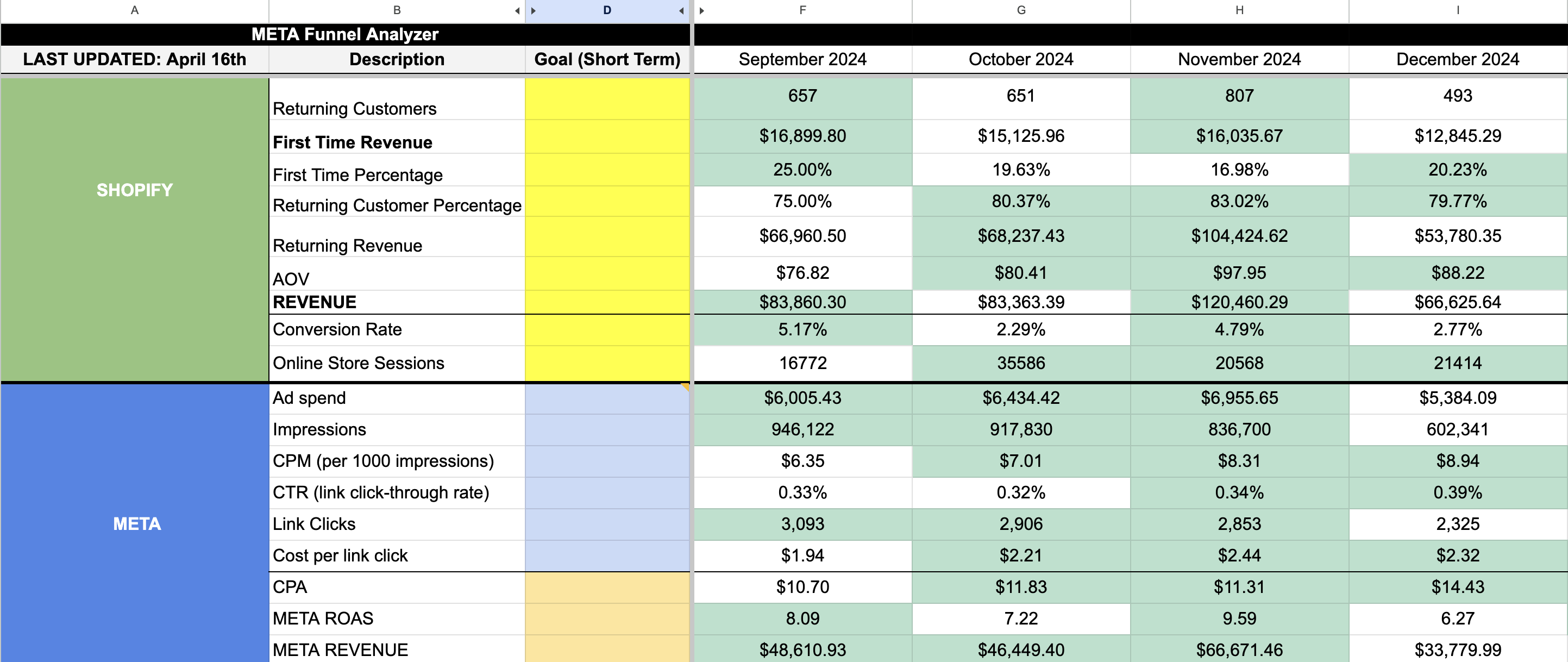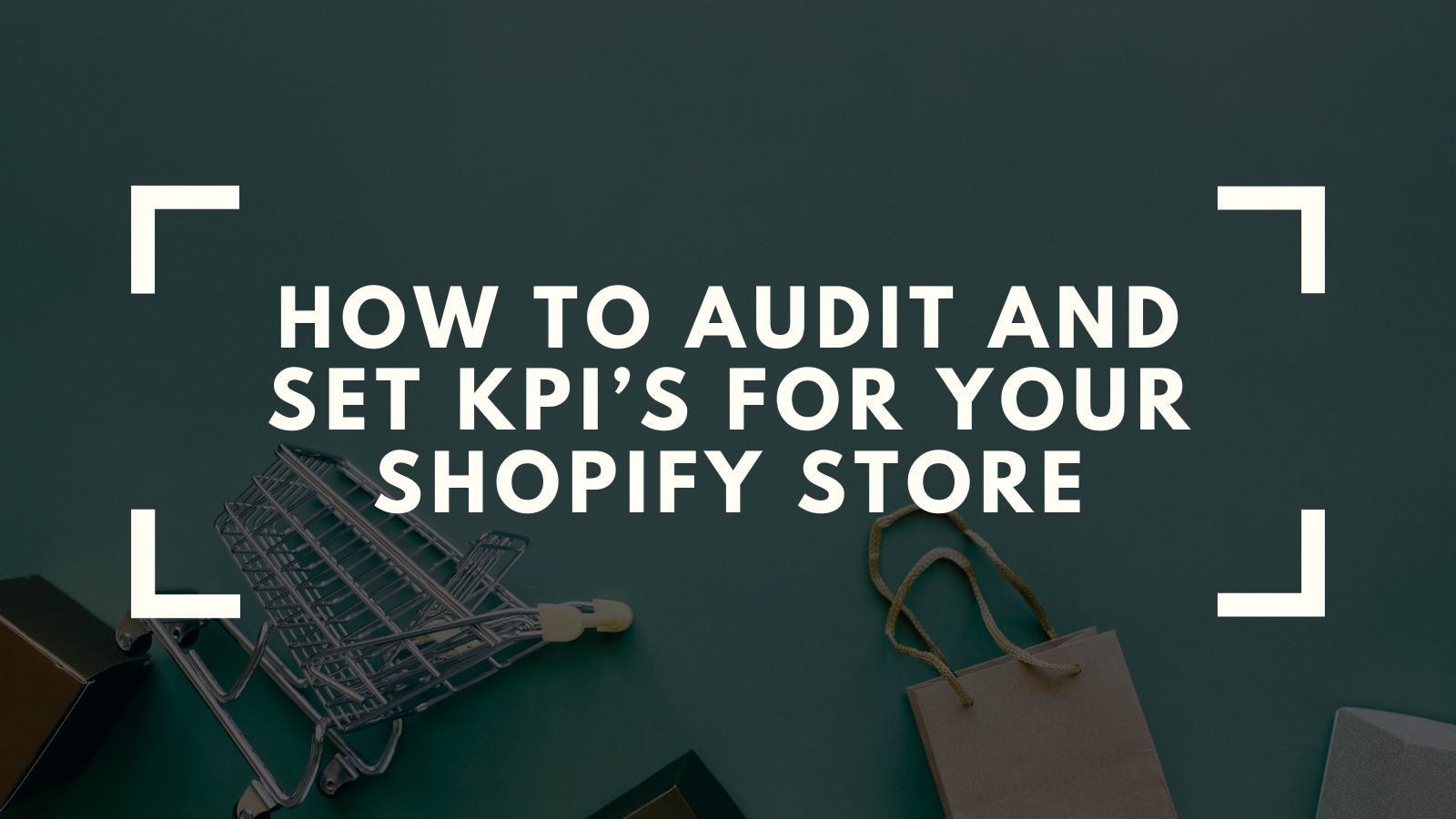The first step in auditing an ecommerce stores performance, and finding opportunities for growth for Media Jet to capitalize on, is to understand where the store stands today. Not only today, but how it compares against its previous targets, and its actuals.
To do this, we should start by defining how far back we need to look. Normally, we suggest pulling data for the last 3-6 months.
Metrics tracked should include the following for ecommerce, and can vary by niche:
Growth Metrics
First time purchase ROAS
Blended CAC (Cost Acquired Customer)
Total Revenue
Total Spend (All Platforms)
Shopify
Total Orders
New Customers
Returning Customers
First Time Revenue
Returning Customer Revenue
AOV
Revenue
Meta
Ad Spend
Impressions
CPM
CTR
Link Clicks
Cost per Link Click
CPA
META ROAS
META Revenue
Ad Spend
Impressions
CTR
Link Clicks
CPA
ROAS
REVENUE
Once the data is pulled, the report should look something like this:

With all this data in hand, you can now look at how all the metrics play together to achieve the end result. You might see parts where ROAS get's better, but the spend was reduced, so revenue is lower. One metric on it's own, never tells the full story.
At this point, through the discovery process, you should have a clear understanding of the stores business goals, whether it's to achieve revenue growth, improve profitability, grow market share, or whatever that may be.
You can then use that to set short term (1-3 month targets), and long term goals (12 month targets) for the store. Short term goals will be converted into specific metrics which will formulate to the end result target. This will highlight areas that need improvement, and using the historicals for that metric you can judge the probability of hitting that target.
For example. In the example above, you can see CTR is has trended under industry standard for the last 4 months, so setting a target of industry standard would be shooting ourselves in the foot and unrealistic. We need to benchmark against ourselves, and set realistic goals for each brand, and set action items to address each.
If the goal is to get conversion rate from 2% to 4%, then we can see that November and September were both above the targets, and we could see what plays we could replicate there. An aggressive acquisition offer or flash sale, a limited time offer, a CRO audit or sprint, could be the right next steps in that situation.
And you continue to go down the list, setting goals and reviewing them with your team as you start to lock them in.
If you want to learn more about how we use audits to supercharge ecommerce growth, or are interested in our team doing a thorough audit for your store schedule a call directly using this link. Our agency offers a risk free 15 day trail to ensure perfect alignment.


